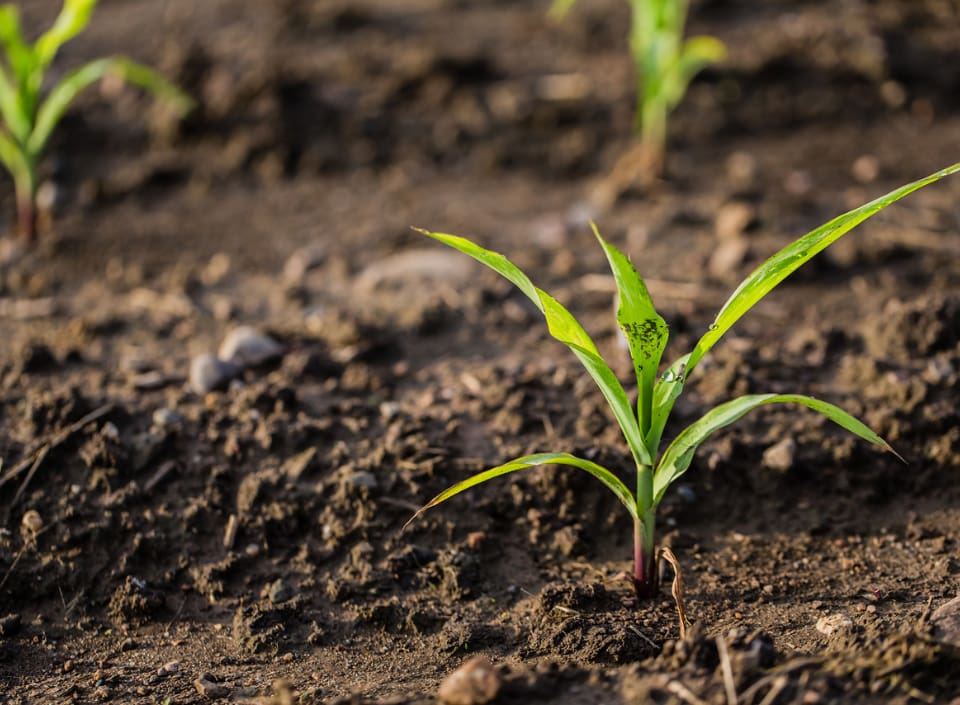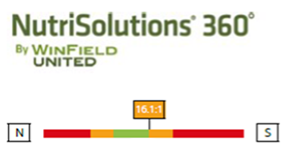The Nitrogen to Sulfur Ratio and Its Importance in Crop Growth
Jun 11, 2024

Nitrogen is the most heavily managed nutrient in corn production systems, but like every other essential plant element, it does not act alone. For example, the chlorophyll molecule that is critical for photosynthesis contains 4 nitrogen ions, and sulfur is a key element (along with several others) involved in the formation of chlorophyll so if the plant does not have adequate sulfur the formation of chlorophyll may slow, and/or become less efficient, which is not something any crop producer should want. Growers want maximum photosynthesis and sugar production! Sulfur is also a component of several important amino acids that are critical to protein production and various other plant metabolic processes. These amino acids also contain nitrogen (every amino acid does) so once again if the plant is lacking in sulfur it cannot form these critical sulfur-containing amino acids and the use of nitrogen will decrease accordingly.
Another important function of sulfur is its role in both the uptake and metabolism of nitrate, which is one of the two forms of nitrogen the plant must take in to feed its nitrogen demand. So, once one understands the importance of having these two nutrients together in the proper balance the question becomes “How does one know if their corn crop has adequate sulfur relative to nitrogen?” The answer is the nitrogen-to-sulfur ratio which can be found on a Nutrisolutions tissue sample report. This simple ratio tells agronomists and farmers whether the plants have the adequate sulfur they need to help maximize nitrogen use efficiency and ensure that applied nitrogen fertilizers are providing the best possible return for the grower. The image below is an example of how that ratio is displayed in the report. An ideal ratio would be 12:1 or something near that and in the case on the right, we can see that the ratio is 16.1:1 which means the concentration of nitrogen in this sample is high relative to sulfur so the corn plants in this sample were taken from do not have the adequate sulfur necessary to maximize nitrogen uptake and metabolism.

Remember that the plant available form of sulfur is sulfate, which has a negative charge and is leachable in most soils so access to moisture can create conditions in which sulfur uptake is reduced even when sulfur-containing fertilizers have been applied. Sulfur also plays a key role in the nitrogen-fixation process of legume plants like soybeans and alfalfa so don’t forget to manage sulfur in these crops as well
Another important function of sulfur is its role in both the uptake and metabolism of nitrate, which is one of the two forms of nitrogen the plant must take in to feed its nitrogen demand. So, once one understands the importance of having these two nutrients together in the proper balance the question becomes “How does one know if their corn crop has adequate sulfur relative to nitrogen?” The answer is the nitrogen-to-sulfur ratio which can be found on a Nutrisolutions tissue sample report. This simple ratio tells agronomists and farmers whether the plants have the adequate sulfur they need to help maximize nitrogen use efficiency and ensure that applied nitrogen fertilizers are providing the best possible return for the grower. The image below is an example of how that ratio is displayed in the report. An ideal ratio would be 12:1 or something near that and in the case on the right, we can see that the ratio is 16.1:1 which means the concentration of nitrogen in this sample is high relative to sulfur so the corn plants in this sample were taken from do not have the adequate sulfur necessary to maximize nitrogen uptake and metabolism.

Remember that the plant available form of sulfur is sulfate, which has a negative charge and is leachable in most soils so access to moisture can create conditions in which sulfur uptake is reduced even when sulfur-containing fertilizers have been applied. Sulfur also plays a key role in the nitrogen-fixation process of legume plants like soybeans and alfalfa so don’t forget to manage sulfur in these crops as well